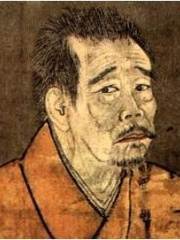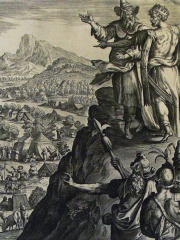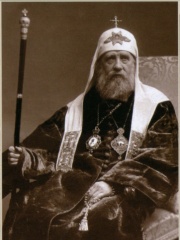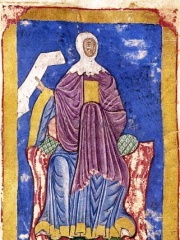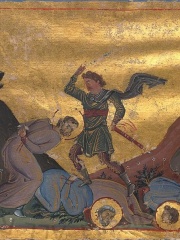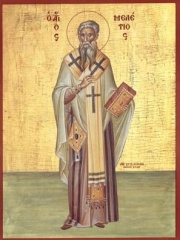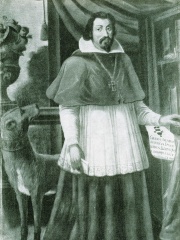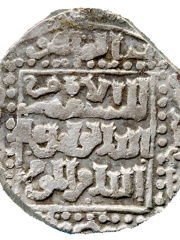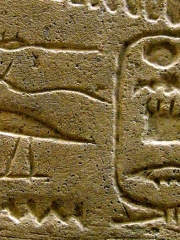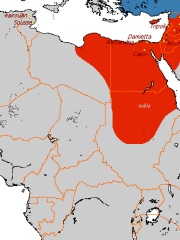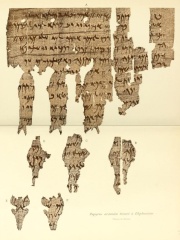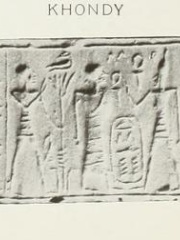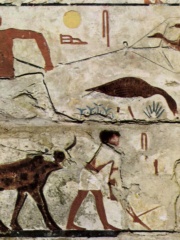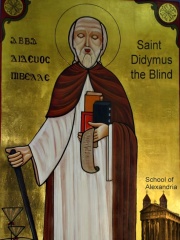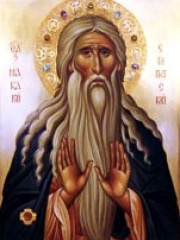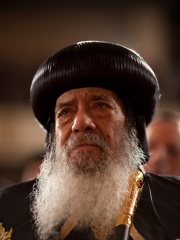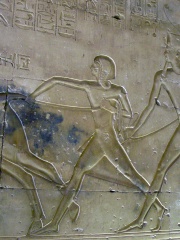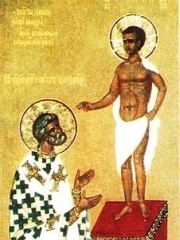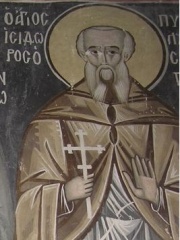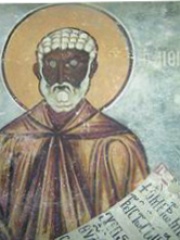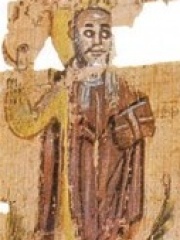RELIGIOUS FIGURE
Nahshon

 Nahshon
Nahshon
In the Hebrew Bible, Nahshon (Hebrew: נַחְשׁוֹן Naḥšon) was a tribal leader of the Judahites during the wilderness wanderings of the Book of Numbers. Read more on Wikipedia
Since 2007, the English Wikipedia page of Nahshon has received more than 237,723 page views. His biography is available in 21 different languages on Wikipedia. Nahshon is the 1,075th most popular religious figure (down from 1,064th in 2019), the 241st most popular biography from Egypt (up from 248th in 2019) and the 28th most popular Egyptian Religious Figure.
Memorability Metrics
240k
Page Views (PV)
57.96
Historical Popularity Index (HPI)
21
Languages Editions (L)
7.29
Effective Languages (L*)
1.71
Coefficient of Variation (CV)
Page views of Nahshons by language
Among RELIGIOUS FIGURES
Among religious figures, Nahshon ranks 1,075 out of 2,238. Before him are Antipope Philip, Antipope Gregory VI, Ikkyū, Balak, Patriarch Tikhon of Moscow, and Urraca of Zamora. After him are Pamphilus of Caesarea, Elizabeth Blount, Anthony Mary Claret, Meletius of Antioch, Charles of Austria, Bishop of Wroclaw, and Ibn Babawayh.
Most Popular Religious Figures in Wikipedia
Go to all Rankings
Antipope Philip
800 - 769
HPI: 58.02
Rank: 1,069
Antipope Gregory VI
1000 - 1018
HPI: 57.99
Rank: 1,070
Ikkyū
1394 - 1481
HPI: 57.98
Rank: 1,071
Balak
HPI: 57.98
Rank: 1,072
Patriarch Tikhon of Moscow
1865 - 1925
HPI: 57.98
Rank: 1,073
Urraca of Zamora
1033 - 1101
HPI: 57.98
Rank: 1,074
Nahshon
HPI: 57.96
Rank: 1,075
Pamphilus of Caesarea
240 - 309
HPI: 57.95
Rank: 1,076
Elizabeth Blount
1500 - 1539
HPI: 57.94
Rank: 1,077
Anthony Mary Claret
1807 - 1870
HPI: 57.92
Rank: 1,078
Meletius of Antioch
400 - 381
HPI: 57.89
Rank: 1,079
Charles of Austria, Bishop of Wroclaw
1590 - 1624
HPI: 57.87
Rank: 1,080
Ibn Babawayh
918 - 992
HPI: 57.87
Rank: 1,081

In Egypt
Among people born in Egypt, Nahshon ranks 241 out of 582. Before him are Giuseppe Ungaretti (1888), As-Salih Ayyub (1205), Jawhar (911), Aybak (1197), Khendjer (-1800), and Solamish (1272). After him are Amyrtaeus (-450), Khamudi (-1549), Nefermaat (-2500), Didymus the Blind (313), Jehan Sadat (1933), and Suzanne Mubarak (1941).
Others born in Egypt
Go to all Rankings
Giuseppe Ungaretti
1888 - 1970
HPI: 58.12
Rank: 235
As-Salih Ayyub
1205 - 1249
HPI: 58.10
Rank: 236
Jawhar
911 - 992
HPI: 58.09
Rank: 237
Aybak
1197 - 1257
HPI: 58.09
Rank: 238
Khendjer
1800 BC - 1800 BC
HPI: 57.98
Rank: 239
Solamish
1272 - 1291
HPI: 57.97
Rank: 240
Nahshon
HPI: 57.96
Rank: 241
Amyrtaeus
450 BC - 399 BC
HPI: 57.86
Rank: 242
Khamudi
1549 BC - 1600 BC
HPI: 57.86
Rank: 243
Nefermaat
2500 BC - Present
HPI: 57.83
Rank: 244
Didymus the Blind
313 - 398
HPI: 57.77
Rank: 245
Jehan Sadat
1933 - 2021
HPI: 57.74
Rank: 246
Suzanne Mubarak
1941 - Present
HPI: 57.62
Rank: 247

Among RELIGIOUS FIGURES In Egypt
Among religious figures born in Egypt, Nahshon ranks 28. Before him are Maria al-Qibtiyya (600), Macarius of Egypt (300), Pope Shenouda III of Alexandria (1923), Antipope Dioscorus (500), Basilides (117), and Amun-her-khepeshef (-1300). After him are Didymus the Blind (313), Pope Peter I of Alexandria (300), Isidore of Pelusium (370), Moses the Black (332), Apollos (100), and Pope Theophilus of Alexandria (310).

Maria al-Qibtiyya
600 - 637
HPI: 65.33
Rank: 22
Macarius of Egypt
300 - 391
HPI: 65.03
Rank: 23
Pope Shenouda III of Alexandria
1923 - 2012
HPI: 62.84
Rank: 24
Antipope Dioscorus
500 - 530
HPI: 61.01
Rank: 25
Basilides
117 - 140
HPI: 60.32
Rank: 26
Amun-her-khepeshef
1300 BC - 1300 BC
HPI: 58.75
Rank: 27
Nahshon
HPI: 57.96
Rank: 28
Didymus the Blind
313 - 398
HPI: 57.77
Rank: 29
Pope Peter I of Alexandria
300 - 311
HPI: 57.42
Rank: 30
Isidore of Pelusium
370 - 440
HPI: 57.36
Rank: 31
Moses the Black
332 - 407
HPI: 57.14
Rank: 32
Apollos
100 - 100
HPI: 56.98
Rank: 33
Pope Theophilus of Alexandria
310 - 412
HPI: 56.88
Rank: 34



